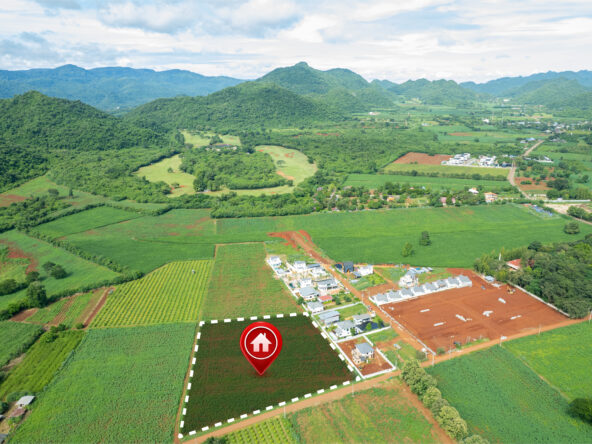Introduction
In the dynamic landscape of modern investments, the paradigm is shifting towards sustainability. The once-separate realms of profit and environmental responsibility are converging, giving rise to a new era in land investments. This blog post explores the delicate balance between profit and environmental responsibility, delving into the benefits, challenges, and strategies associated with sustainable land investments.
The Benefits of Sustainable Land Investments
Sustainable Environmental Advantages
Preserving biodiversity is not just an ecological nicety; it’s a fundamental necessity for the health of our planet. Sustainable land investments actively contribute to this cause by implementing practices that protect and enhance ecosystems. Beyond safeguarding endangered species, this approach fosters resilient habitats that are crucial for maintaining the delicate balance of our global ecosystems.
Carbon sequestration emerges as a powerful ally in the fight against climate change. Sustainable land investments, especially those involving afforestation and reforestation, play a pivotal role in sequestering carbon dioxide. By strategically planting trees and vegetation, these investments act as carbon sinks, absorbing and storing atmospheric carbon. This not only mitigates the impacts of climate change but also contributes significantly to the overall health of the planet.
The commitment to soil health and conservation is a cornerstone of sustainable land investments. Adopting organic farming practices and incorporating agroforestry techniques not only promotes the cultivation of healthier crops but also serves as a bulwark against soil erosion and degradation. In this way, these investments ensure the long-term fertility and sustainability of the land, fostering a harmonious relationship between agriculture and the environment.
Socioeconomic Benefits
Beyond the ecological advantages, sustainable land investments carry profound socioeconomic benefits. Local communities become active stakeholders, benefiting from job creation and the establishment of sustainable livelihoods. By integrating with these communities, investors not only bolster social well-being but also contribute significantly to the economic development of the region.
The ripple effect of sustainable investments in local communities goes beyond immediate financial gains. By providing stable and sustainable job opportunities, these investments empower individuals and communities to break free from cycles of poverty. This, in turn, contributes to broader social development goals, creating a positive feedback loop that transcends the immediate scope of the investment.
In summary, the benefits of sustainable land investments extend far beyond profit margins. They are integral to the broader narrative of environmental stewardship and sustainable development, embodying a vision where financial success and ecological responsibility are not mutually exclusive but rather coalesce to create a more balanced and resilient world.
Challenges in Achieving Sustainable Land Investments
Sustainable land investments hold immense promise, yet their realization is not without hurdles. As we embark on this transformative journey, it’s crucial to confront and navigate the challenges that may pose roadblocks to achieving the delicate balance between profitability and environmental responsibility.
Economic Considerations
One of the primary challenges that investors face in the realm of sustainable land investments is the perceived economic barrier. The initial costs associated with adopting sustainable practices can be higher than those of conventional approaches. This creates a dilemma for investors who are understandably focused on returns on investment within a reasonable timeframe. While the long-term benefits of sustainable land practices are evident, the upfront financial commitment can be a deterrent.
Moreover, in the market-driven world, consumer behavior often dictates the success of a product. Sustainable goods, sometimes perceived as premium, face the challenge of market acceptance. Consumers, often motivated by price considerations, may not readily embrace environmentally conscious products. This market challenge adds another layer of complexity for investors who seek both profitability and sustainability in their ventures.
Regulatory Hurdles
Navigating the complex landscape of regulations and compliance is another substantial challenge in the realm of sustainable land investments. Governments worldwide are increasingly recognizing the need for stringent environmental standards. While these regulations are crucial for safeguarding our ecosystems, they present a complex web that investors must carefully navigate. Ensuring compliance with evolving environmental standards requires a deep understanding of local, national, and international regulations, demanding time and resources.
Government policies and incentives further complicate the landscape. The inconsistency in policies across different regions can pose a challenge for investors seeking to align their strategies with governmental goals. Understanding the ever-shifting regulatory framework is not only a legal imperative but also a strategic necessity for those aiming to integrate sustainability into their investment portfolios.
Yet, despite these challenges, they represent opportunities for growth and innovation. Overcoming economic and regulatory obstacles demands creative solutions, strategic partnerships, and a steadfast commitment to the principles of sustainability.
Strategies for Harmonizing Profit and Environmental Responsibility in Land Investments
The pursuit of sustainable land investments requires a strategic mindset, one that consciously integrates profitability with environmental responsibility. Examining effective strategies allows investors to navigate this delicate balance, ensuring positive outcomes for both their portfolios and the planet.
1. Sustainable Land Management Practices
Agroforestry: Agroforestry stands out as a resilient strategy for sustainable land management. Integrating trees and shrubs within agricultural landscapes offers a multitude of benefits. Beyond enhancing biodiversity and preventing soil erosion, agroforestry systems contribute to improved water retention, nutrient cycling, and increased overall resilience to climate variability.
Organic Farming: Adopting organic farming practices is another cornerstone of sustainable land management. By eschewing synthetic chemicals and pesticides, organic farming fosters healthier soil, reduces water pollution, and minimizes the ecological footprint of agriculture. Moreover, the demand for organic produce is growing globally, presenting a market opportunity for investors committed to sustainable practices.
Wildlife Conservation Efforts: Incorporating wildlife conservation into land management plans contributes significantly to environmental responsibility. Creating protected areas and wildlife corridors helps maintain the balance of ecosystems, preserving biodiversity. By actively engaging in wildlife conservation, investors can showcase a commitment to the broader ecological health of the region.
2. Financial Considerations
Long-Term Investment Strategies: Sustainable land investments often yield returns over an extended period. Adopting a long-term investment perspective is crucial for investors to reap the full benefits of environmentally conscious practices. Patient capital that supports sustainable land management allows for the realization of ecological and financial dividends over time.
Green Financing Options and Incentives: Exploring green financing options and incentives is pivotal for aligning financial interests with environmental responsibility. Governments and financial institutions increasingly offer incentives such as tax breaks, subsidies, and low-interest loans for sustainable land investments. Leveraging these financial tools not only reduces the economic burden on investors but also actively supports the broader transition towards sustainable practices.
3. Overcoming Obstacles: Practical Tips for Investors
Research and Due Diligence: Thorough research and due diligence are paramount when embarking on sustainable land investments. Conducting comprehensive environmental impact assessments helps identify potential risks and opportunities. Understanding the local ecology, climate patterns, and regulatory landscape enables investors to make informed decisions that align with both financial and environmental goals.
Collaboration and Partnerships: Building collaborative partnerships is a strategic imperative. Engaging with local communities, environmental organizations, and fellow investors fosters a network of support. Collaboration ensures that investments align with the needs and aspirations of local communities, enhancing social acceptance and contributing to the overall success of sustainable initiatives.
4. Technology and Innovation
Precision Agriculture: Embracing precision agriculture harnesses the power of technology to optimize farming practices. Utilizing data, sensors, and AI-driven tools allows for precise resource allocation, minimizing waste and environmental impact. Precision agriculture enhances efficiency, productivity, and sustainability, making it an attractive strategy for forward-thinking investors.
Sustainable Land Use Planning: Innovations in sustainable land use planning leverage technology to optimize resource allocation, reduce environmental impact, and promote responsible land development. By employing geospatial data, machine learning, and smart planning tools, investors can ensure that their projects align with broader sustainability goals and contribute to responsible land use.
As investors navigate the intricate landscape of sustainable land investments, these strategies provide a roadmap for success. By adopting sustainable land management practices, considering long-term financial perspectives, overcoming obstacles through research and collaboration, and embracing innovative technologies, investors can not only balance profit and environmental responsibility but also contribute to a more sustainable and resilient future. In this way, sustainable land investments become not just a financial venture but a commitment to the well-being of the planet and future generations.
Overcoming Obstacles: Practical Tips for Investors
Research and Due Diligence
In the world of sustainable land investments, thorough research and due diligence are indispensable. Conducting comprehensive environmental impact assessments and evaluating the long-term sustainability of an investment are critical steps in mitigating risks. Understanding the ecological dynamics of the chosen location and potential challenges helps investors make informed decisions.
Collaboration and Partnerships
Successful sustainable land investments often involve collaboration with local communities and environmental organizations. Building strong partnerships ensures that investments align with local needs and contribute positively to the social fabric. Creating a network of like-minded investors further strengthens the collective impact of sustainable initiatives.
Future Trends in Sustainable Land Investments
Emerging Technologies and Innovations
The landscape of sustainable land investments is evolving with emerging technologies and innovations. Precision agriculture, which utilizes data and technology to optimize farming practices, is gaining traction. Sustainable land use planning, enabled by technology, allows for efficient use of resources and minimizes environmental impact.
Global Initiatives and Commitments
International agreements and protocols are shaping the future of sustainable land investments. The Paris Agreement, for instance, emphasizes the need for sustainable practices to mitigate climate change. Corporations are also increasingly recognizing their role in promoting sustainability, with many committing to environmentally responsible practices in their operations and supply chains.
Conclusion
As we navigate the intricate terrain of sustainable land investments, it becomes evident that the intersection of profit and environmental responsibility is not only achievable but essential for the well-being of our planet. By embracing the benefits, understanding and overcoming challenges, and adopting strategic approaches, investors can play a pivotal role in shaping a future where profitability and sustainability coexist harmoniously.




